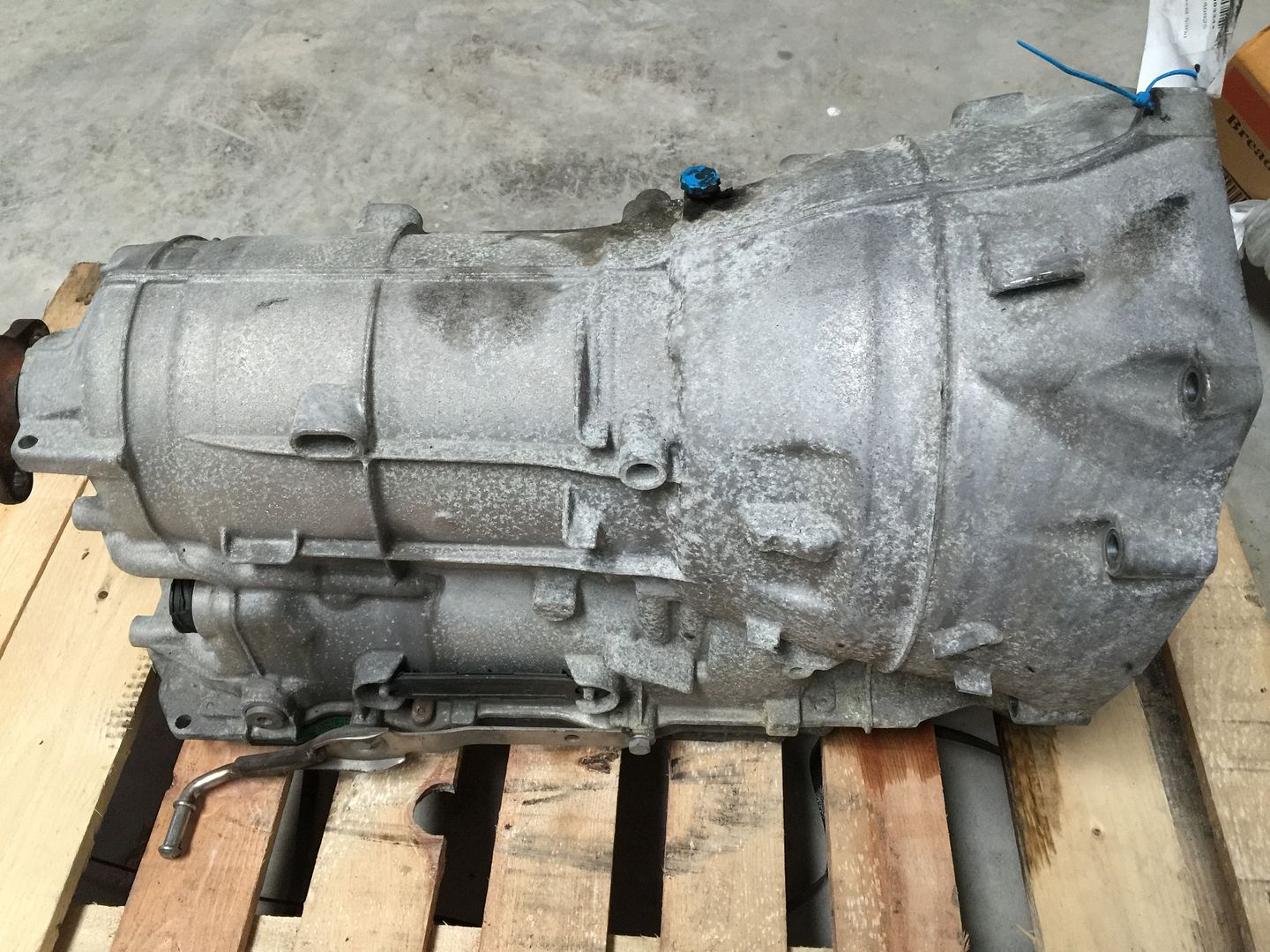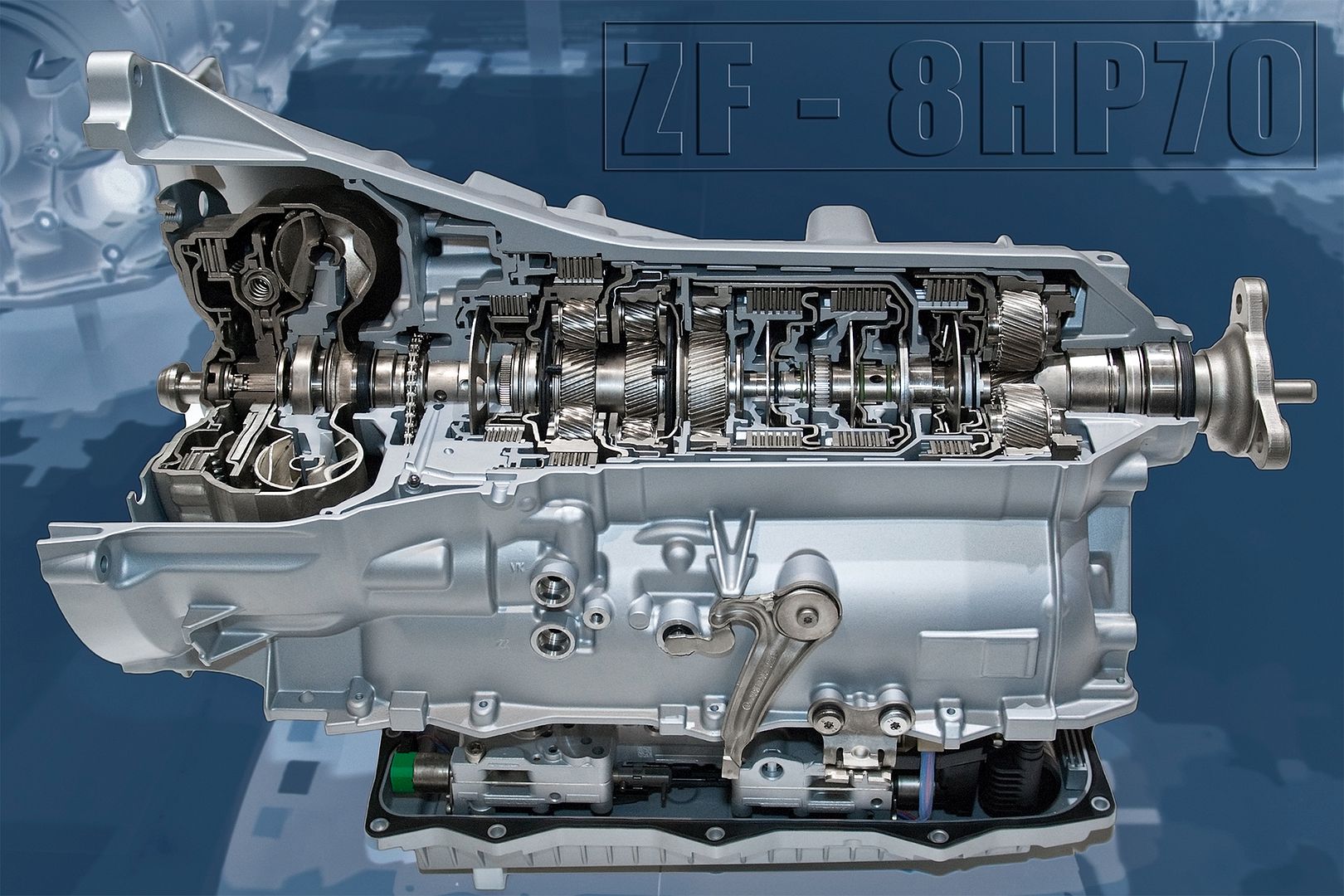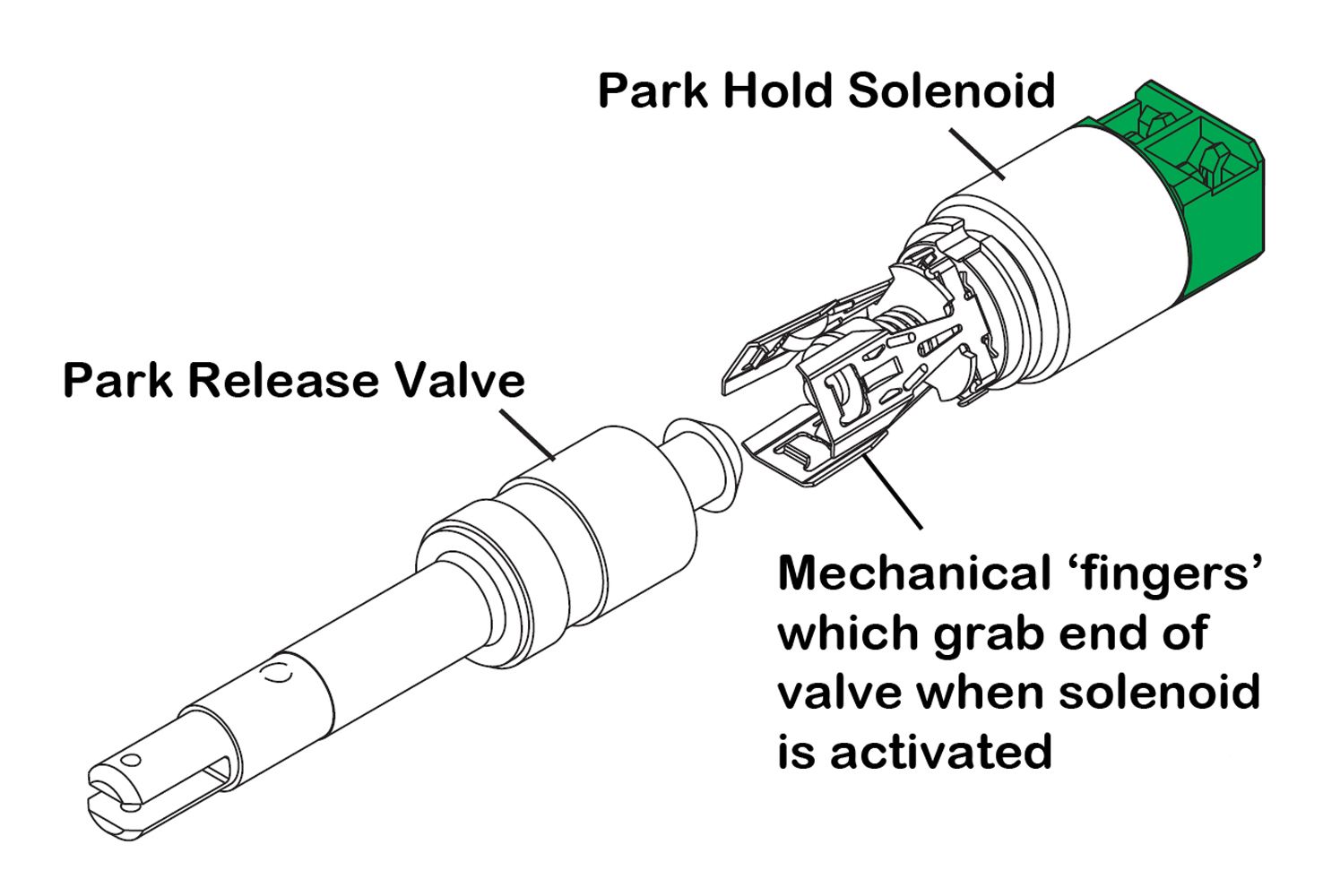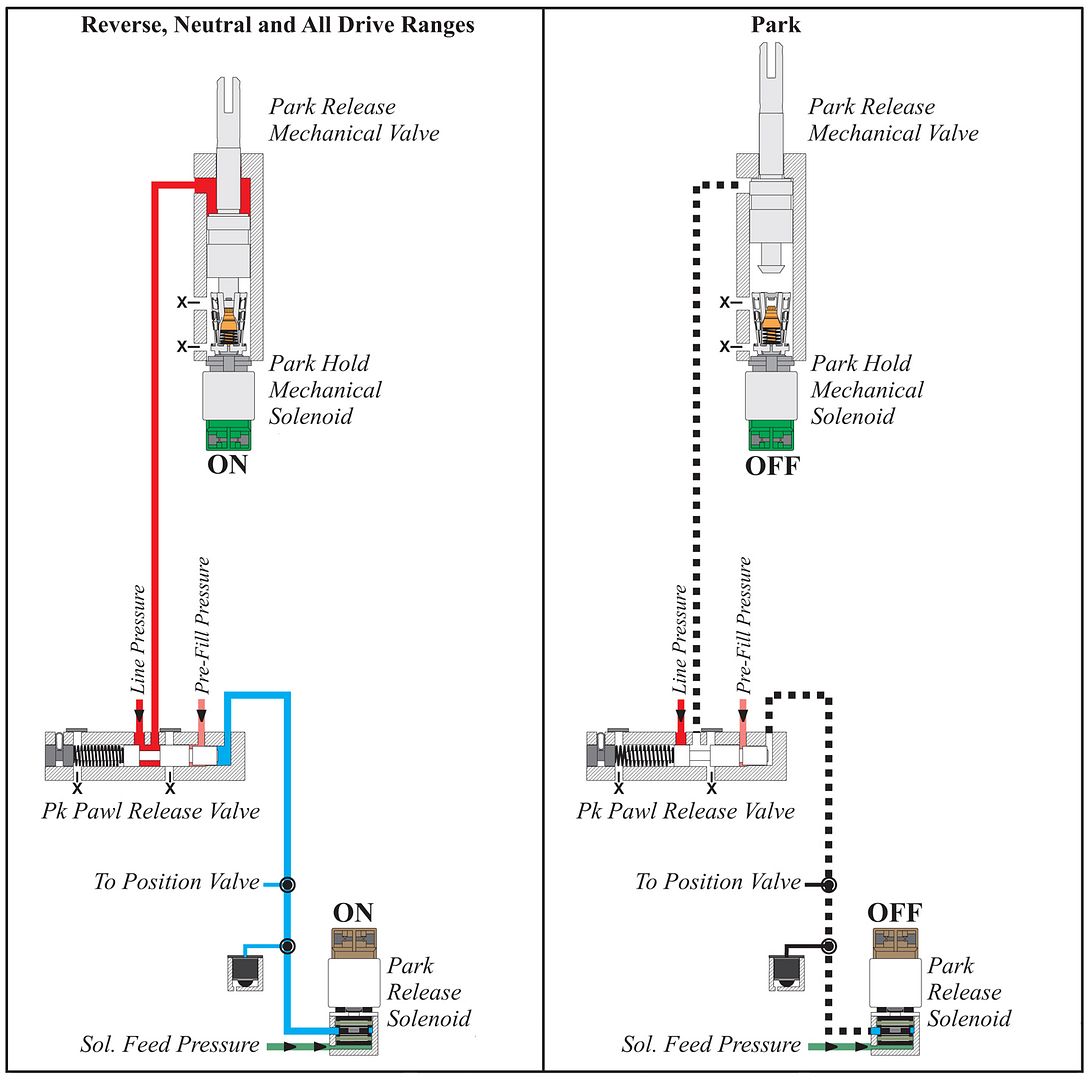GGDR
Member Since: 26 Nov 2016
Location: London
Posts: 3552

 
|
Found this which , whilst pretty hard core technical, is written in plain-enough language to (nearly) understand.
Since quite a few of our RR's have the ZF 8-speed, thought I'd post it in case anyone wants to know exactly how their transmission works.
Quote:Every gear change the ZF8 commands is one of these "clutch" to "clutch" shifts. The ZF8 has 5 of these, and has 3 active at a given time for the gears 1-8 and reverse. Park/Neutral has 2 active, so shifting from Neutral to Reverse/Drive has a single engagement.
So it releases one clutch and applies another to shift.
The releasing clutch is called the offgoing clutch, and the engaging one the oncoming clutch.
Depending on whether its an upshift or downshift, under power or coasting, the actual "stages" of shift are different, but those are mostly unimportant, and in the case of "under power" or "coasting" is mapped in tables as positive or negative torque.
First, understand that a clutch pack can hold a certain amount of torque depending on how much pressure its held together with. This pressure is transmitted by various means, but its usually a small chamber (a clutch chamber/volume) that has a piston that pushes the clutch packs together, and a spring that returns it back to open (so that with no pressure the chamber empties). By default, when you're driving down the road, the pressure doing this is the "line pressure". Higher pressure has higher torque capacity, but if you look at the line pressure table, you'll see they modify it as torque moves. Higher pressure requires the oil pump in the transmission to work harder, and causes more drag, so its controlled to have enough torque capacity but not excessively so, in order to keep efficiency high.
Now when a shift happens, we want to remove the torque capacity from one clutch, and transfer it to another. To reduce drag and improve efficiency again, we typically have clutches sitting empty to help minimize any movement they have when not active. So we have to fill our oncoming clutch, and empty our offgoing clutch, but do so in an organized manner so that we don't break anything inside the transmission and hold as much torque as we can during the shift, and go as quickly as we can.
So I'll divide the shift into a few sections:
Fill->Torque Transfer->Inertial Phase->Maintenance
Fill
During the fill phase, we fill the oncoming clutch with oil again, up until the point it starts actually building pressure in the chamber. Essentially the clutch solenoid valve targets a set "pressure" (really its just an opening of the valve, look at the characteristic curves for the solenoid)
There are actually three sub-phases: A prefill, where the ATF is pumped into the chamber just until it starts to hit resistance from the piston/spring, a fast fill to move the piston to move it so the clutches are just nearly touching, and a stable fill (we call just fill) that moves the clutch packs until they just "kiss" and have 0 torque capacity.
Tuning this stage is complex, and if you want to learn more, I'd suggest this paper: Dynamic Analysis and Control of the Clutch Filling Process in Clutch-to-Clutch Transmissions
There's a lot of math in here, but the ideas are also expressed in somewhat plain English if you'd like to learn more.
The time this takes we want to be as quick as possible, as its responsible for a big amount of delay we feel in a shift.
Torque Transfer
During this stage, we transfer the torque capacity from the offgoing clutch to the oncoming clutch. We do this using a targeted oncoming rate and pressure, and a targeted offgoing rate and pressure. Now, when calibrating we put in the oncoming target pressure and offgoing target pressure, as well as ramps.
These are however only guidelines, the transmission internally is trying to hit a targeted slip while doing this transfer (for the ZF8 I have not identified what this is or how its controlled, but I know it happens). So the transmission itself attempts to adapt these pressures while shifting to hit these goals.
At the finish of this stage, our oncoming clutch is now holding all the internal torque of the transmission, and the offgoing is holding none.
Really the only tuning parameter we have for this step is the Oncoming and Offgoing rates. And we only have the offgoing control during downshifts, during an upshift, we don't have control on the ZF, as its internally managing this to manage the RPM drop and internal slip.
I should mention, the oncoming clutch is still "slipping" at the end of this stage, but its now transferring full torque. This slipping is required as the output of the clutch isn't necessarily at the same speed as the input. Reducing this slip to zero is the goal of our NEXT phase.
Inertial/Slip Phase
This is the stage we normally think of as the "shift". Its when the engine speed starts to change (and in fact the speeds of all the stuff inside the transmission as well!) and we start to feel like we're shifting. During this phase, we're basically waiting for the oncoming clutches slip to reduce to zero. We do this by controlling its pressure.
Now that torque has been transferred internally, everything has to "catch up". These internal torques now act on new planetary gear sets, the input shaft, and turbine. During this step is when RPM actually drops or rises as the turbine drags the engine down or up. If you were wondering why our oncoming pressure is adjustable by gear, its because these internal torques change per gear.
So, we have a target slip time. This is how long we expect this ratio change to take up. If we want to speed up our perceived shift, we target a shorter time here. We likewise will need MORE oncoming pressure to deal with these higher internal torques. Likewise, this is where torque management comes into play in a very important regard. During an upshift, any torque the engine is producing has to be handled by the transmission in addition to what its already handling as internal components are speeding up or slowing down. By having increased engine torque, we have increased pressure desired, and we have increased the amount of energy that the oncoming clutch bears. To make this job easier, we have upshift torque management, to reduce the strain on the transmission, and in this case it will actually SPEED UP the process of the shift as we'll have less slip and energy to control. So we can actually complete our shift faster with the correct amount of torque management. Too little and we're harming things and slowing it down, too much and we're slowing the car down when it comes out of the shift unnecessarily.
On a downshift, we reverse this process a little, we actually want torque from the engine to help us speed up the shift (raise the engine RPM and rev match!). Too little and we're again just wasting time, and too much and we're overreving and causing excess wear as the clutch has to bring it back down.
But typically, faster slip times and more engine torque mean we need more clutch torque capacity, and so you see as we target more torque or faster shifts, our pressures increase.
As well, the offgoing clutch really shouldn't be apart of this phase. Once the oncoming clutch is handling torque, if the offgoing one was as well, we'd start to have parts of the transmission fight each other. This is called "tie-up" and slows our shift down (and puts a lot of strain on the gears and clutches!). Hopefully we picked good values while ramping it off previously!
Now if we don't apply enough oncoming pressure to handle everything, we might actually have the engine kind of overshoot its target RPM on shifts. We call this "flare" on a downshift (the engine overspeeds the target input speed before its brought down) and "slip" on an upshift (it feels like the engine kind of slowwwwly slides into gear). So, our goal here is to set pressures knowing our targeted shift time. Ultimately, we're limited by how much pressure we can generate, and the torque capacity of our clutches. The faster we want this phase to happen, the more internal torque we need to do so, and the higher the pressure and more slip we potentially face. OEMs balance this with comfort in mind as well. If this phase isn't smooth, the user feels it. A fast shift that's a little sloppy might have a burst of torque or a drop in it on the output shaft, and you feel this (the shift "chirps the tires" or "bogs down").
Most of your time tuning a transmission, your goal is to speed up shifts or change the quality of them, so you play a careful balancing act between shortening the slip time and increasing the pressure.
As well, internally there is adaption happening where the transmission is trying to adjust the oncoming pressure to hit the target slip time. If it has to adjust too far, you actually will get DTCs indicating clutch failures (and it'll even know which clutches are possibly failing because of the shifts it notices the problem on!
My best advice for tuning this is shortening the shift or reducing the torque management means more pressure is needed to handle the higher internal torques. If you allow flare or bogging to happen, all that energy is being dumped into the clutches wearing them out prematurely. There is an eventual limit where you simply can't go any faster before it happens that you will hit, and that's a limitation of the clutch materials and pressures you can apply. A beefier trans that can better handle those stresses is necessary, but then you may also have to retune all the low power shifts so they still feel soft and gentle Keep in mind raising the target pressure also extends the torque transfer phase, as you need more time to get the pressure and torque capacity to that level!
Maintenance
This phase is boring. Oncoming pressure is set to line pressure to make sure the clutch doesn't slip. During this step, its just making sure the oncoming clutch pressure allows zero slip. The offgoing clutch has no pressure applied, and is slowly draining away (there's an empty time that is mapped to indicate how long this takes).
Tuning this means tuning the line pressure tables.
I know thats a lot to digest, and if you want to learn more, I suggest taking a read of Virtual Clutch Controller for Clutch-to-Clutch Shifts in Planetary-Type Automatic Transmission.
While reverse engineering the ZF8, I found this to be very helpful in trying to figure out how they were managing the shifts and plotting them out.
Also as a quick aside to what "phase" you should target while tuning:
If you want the "delay" from when a shift is commanded to when you feel it "start", you need to tune the fill and torque transfer (ramp) phases. You don't feel anything happen until this completes and inertial transfer starts! An aside here, a lot of people perceive lots of transmissions to have long delays from the triggering a paddle to the "shift" happening. Most of the time, its not a hardcoded delay, but is actually these two phases executing. Part of what makes the ZF8 a great transmission is that it can accomplish both these phases very quickly, making it feel like when you press the paddle, it shifts right away!
If you want the "delay" as the ratio is changing to be different, you need to tune the inertial/slip phase. Keep in mind, the faster you want to do this, the more torque you see internally, the more energy the clutch sees, and the faster it can wear! This is balanced by OEMs to be comfortable and provide good service life. We may have different goals in mind in the aftermarket (or in fact beefed up the clutch packs so they can handle more energy!).
Hopefully that's as thorough as you need, or more than that. If you want to learn more, check out the links I provided.
From here:
https://forum.hptuners.com/showthread.php?...-Steven-HP Cheers, Greg
- - - - - - - - - - - - - - - - - - - - - - - - - - - - - - - - - - - - - - - - - -
2011 Vogue SE 4.4 with lots of toys in Stornaway
|















![]()






